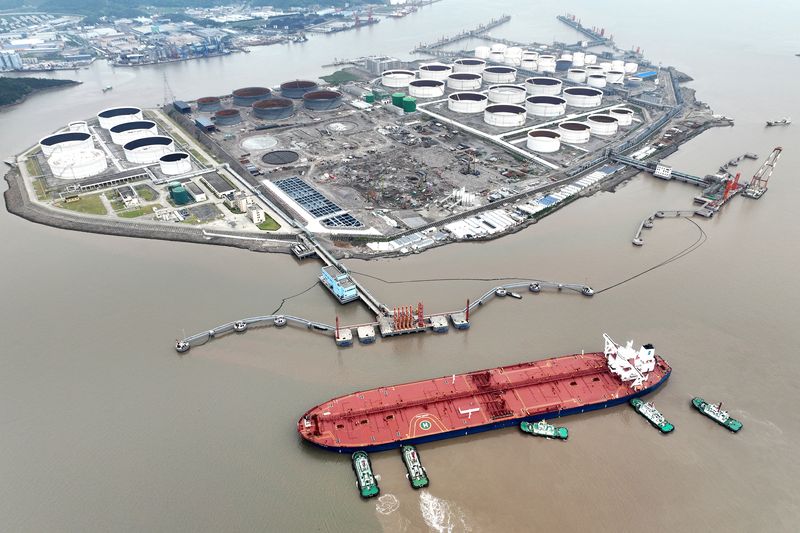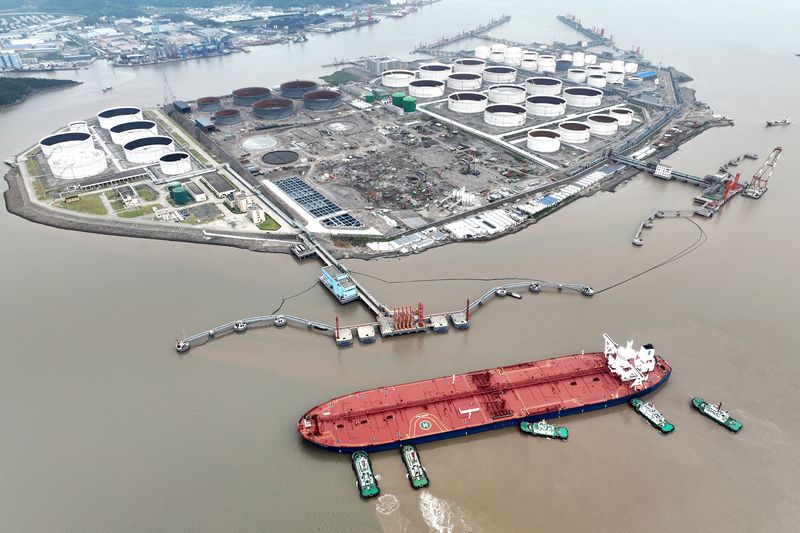Commodities
Oil prices on track for fourth straight week of gains

By Arunima Kumar
(Reuters) -Oil prices edged lower on Friday but were trading near their highest since late April and on track for a fourth straight week of gains, driven by hopes of strong summer fuel demand and some supply concerns.
futures dipped 22 cents, or 0.25%, to $87.21 a barrel by 1105 GMT. U.S. West Texas Intermediate (WTI) crude futures were down 9 cents, or 0.11%, at $83.79.
With the U.S. market shut on Thursday for the Independence Day holiday, trading was thin and there was no settlement for WTI, but prices have risen this week on strong summer demand expectations in the United States.
“Those who have kept faith that the driving season would eventually come are glowing in prescience and the many calls of a much better path for bulls in the third quarter seem to hold true at present,” said PVM oil analyst John Evans.
The U.S. Energy Information Administration (EIA) reported a huge 12.2 million barrel inventories draw last week, compared with analyst expectations for a draw of 700,000 barrels. [EIA/S]
U.S. data on Wednesday showed that first-time applications for unemployment benefits increased last week while jobless numbers also rose, which analysts said could hasten interest rate cuts by the Federal Reserves and support oil markets.
On the supply side, Reuters reported on Thursday that Russian oil producers Rosneft and Lukoil will make sharp cuts to oil exports from the Black Sea port of Novorossiisk in July.
“This is a positive signal for the forecast supply deficit over third quarter, but given Russia’s poor adherence to production quotas in the past, it will take some time to see if this will be delivered,” said Panmure Liberum analyst Ashley Kelty.
Russian gasoline production is expected to rise by between 15,000 and 20,000 metric tons in the last third of July as two refineries restart operations, the energy ministry said on Friday.
Meanwhile, Saudi Arabia’s Saudi Aramco (TADAWUL:) has cut prices for the flagship Arab Light crude it will sell to Asia in August to $1.80 a barrel above the Oman/Dubai average, underscoring pressure faced by OPEC producers as non-OPEC supply grows.

Traders were also tracking the war in Gaza and elections in France and Britain, analysts said.
Britain’s Labour Party was set for a landslide victory after 14 years of Conservative rule.
Commodities
Oil prices rise; U.S. crude inventories plunge, Russia-Ukraine truce eyed
Commodities
India’s Reliance to stop buying Venezuelan oil over US tariffs, sources say
Commodities
Oil prices climb on Venezuela supply worries

 Forex3 years ago
Forex3 years agoForex Today: the dollar is gaining strength amid gloomy sentiment at the start of the Fed’s week

 Forex3 years ago
Forex3 years agoUnbiased review of Pocket Option broker

 Forex3 years ago
Forex3 years agoDollar to pound sterling exchange rate today: Pound plummeted to its lowest since 1985

 Forex3 years ago
Forex3 years agoHow is the Australian dollar doing today?

 Cryptocurrency3 years ago
Cryptocurrency3 years agoWhat happened in the crypto market – current events today

 World3 years ago
World3 years agoWhy are modern video games an art form?

 Commodities3 years ago
Commodities3 years agoCopper continues to fall in price on expectations of lower demand in China

 Economy3 years ago
Economy3 years agoCrude oil tankers double in price due to EU anti-Russian sanctions























